Focus on Norway: Linda Bournane Engelberth
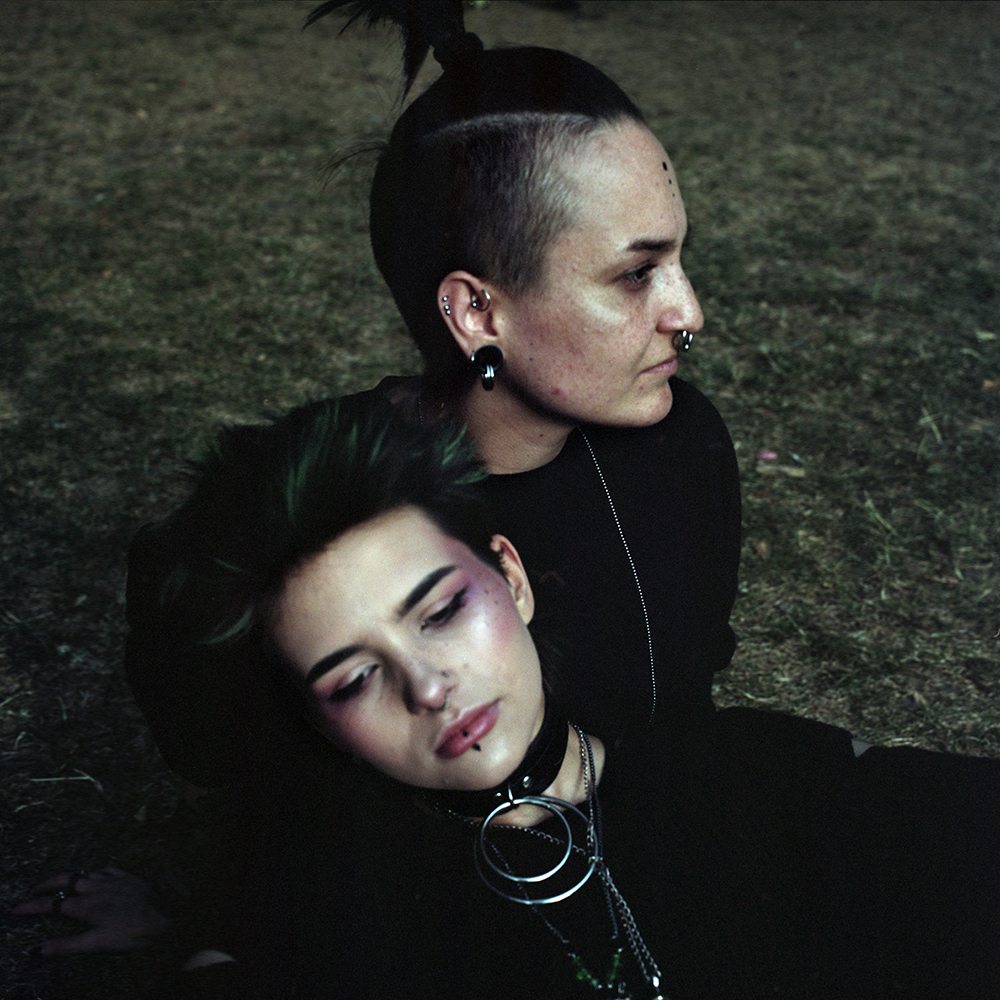
Fay, 20 London, UK Identifies as a non-binary person. Uses the pronouns they/them. – For me, being non-binary is more of an internal thing. The way I dress, the way I present myself to others, has always been quite back and forth. One day I look more stereotypically masculine, the next day more female, and another day androgynous. But internally, I consistently feel like I am neither. I feel like I could not put myself into being male, which is why I am not a trans male, and I could not identify myself as a cisgender female, because I do not think I am all female. So, it is definitely something that is a bit more of an internal thing for me. With friends and family, I use any pronoun, as long as they know I am non-binary. With people I don not know, I introduce myself as ‘them’, because I think they get the idea that I am non-binary faster then. It also makes it more consistent; I do not have to explain myself, which takes a very long time. I started feeling like this when I was about 13 or 14, but then it was much more underground – almost like a thing people did to be different. Then I started realizing that it is actually a real thing I feel every day, so it is not like a trend. People definitely have experiences that are valid when they are non-binary. N8 (Nate), 28 Born in Greece. Lives in London, UK Identifies as a non-binary trans guy. – I was assigned female at birth and I am transitioning. I am evolving to become more comfortable with myself. I have always felt non-binary because the binary idea of gender does not make sense, and I never fitted typically into any gender. The expression of my gender is very androgynous, so I am not changing from a woman to a man; I am changing from myself to more of myself. ©Linda Bournane Engelberth
Interviewing Linda Bournane Engelberth in her studio by way of Zoom was a memorable way to observe some of the distinctions in the manner in which governments support their artists. Ms. Engelberth and other Norwegian photographers I have interviewed this week share their studio space in a collective arrangement. Eleven photographers form a group that shares equipment and resources among themselves and others wishing to join as members. The government of Norway provides occasional financial support for the analog collective in purchasing equipment for the studio. It is a refreshing approach to fostering the photographic arts in Norway.
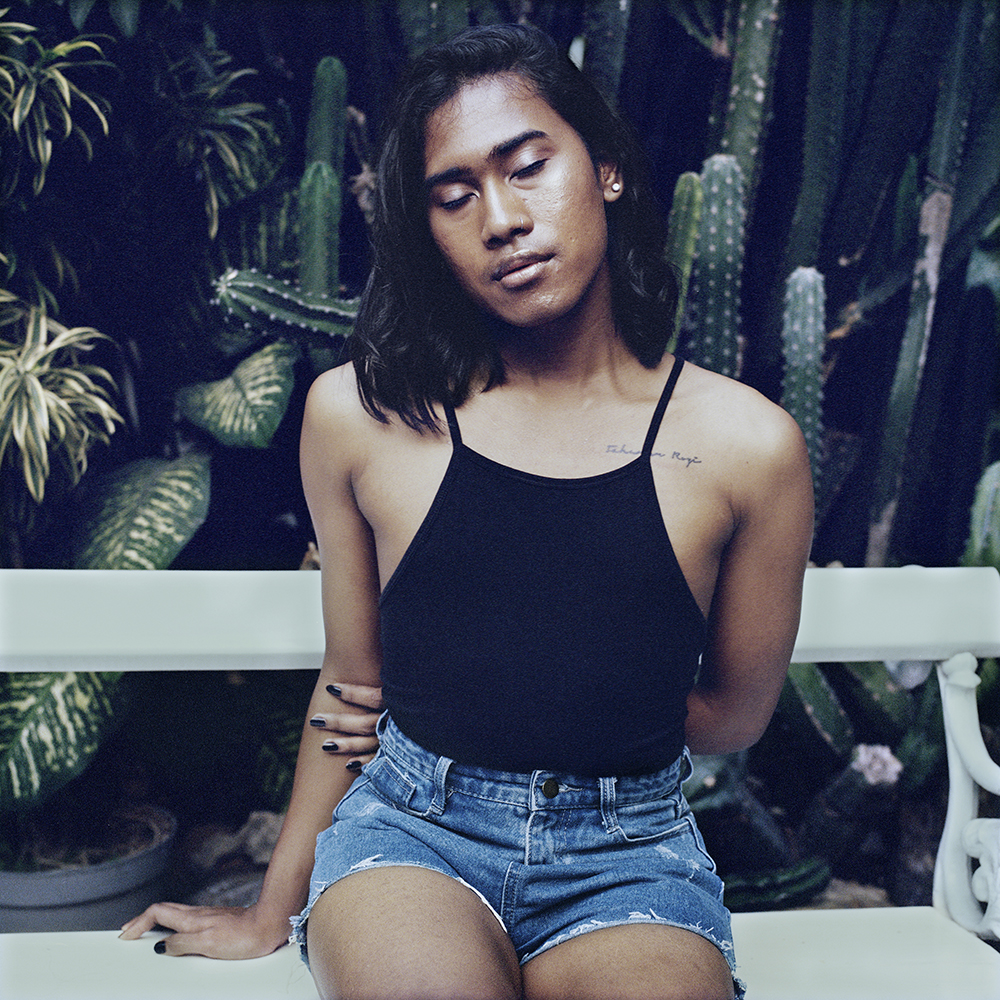
Ozi, 22 Born in East Java, lives in Jakarta, Indonesia. Identifies as non-binary. Uses the pronouns she/her. – I lean more towards being non-binary, because I love my feminine side. I explore myself through art, fashion, I wear women’s clothing, heels and so on. It has been a long journey for me. I came out as LGBT in junior high school, to my close friend. After being in Milan and working in fashion, I started to feel more like myself. I realized it was ok to be me, and after moving back to Indonesia, I felt more comfortable with being myself. I feel like I am more women now, but it has been changing, like this is a male body but a woman’s soul. But, I have experimented a lot with my gender. My parents are still close-minded about this. I want to help them become more open-minded. I told them times are changing, and they have come to be more accepting once they understood that I am capable of supporting myself and living independently. I have felt this way since I was very young. Non-binary to me is a person that is either male or female, but actively takes on the role of the opposite gender. Transsexuals would want to change their whole identity to female or male. Transsexual is more like the next level after non-binary. For me the name is not so important, the self is more important. ©Linda Bournane Engelberth
Linda Bournane Engelberth is a Norwegian/Algerian artist based in Oslo and Berlin. She holds an advanced craft certificate in photography and a BA in History of Art. Her work focuses on identity through personal and subjective narratives, as well as rural communities in flux. Her most recent exhibitions include Die Haus der Photographie, Deichtorhallen, Hamburg, Germany, Fotogalerie Wien, Vienna, Austria and Noplace, Oslo, Norway among several other exhibitions in Norway, the United States and Europe. From 2011-2013 she was selected by the Norwegian Journal of Photography for a program supporting ten independent photographers in Norway. Her work also was selected for the European Photo Exhibition Award of 2014. She is a member and is represented by the VII Photo Agency, located in New York.
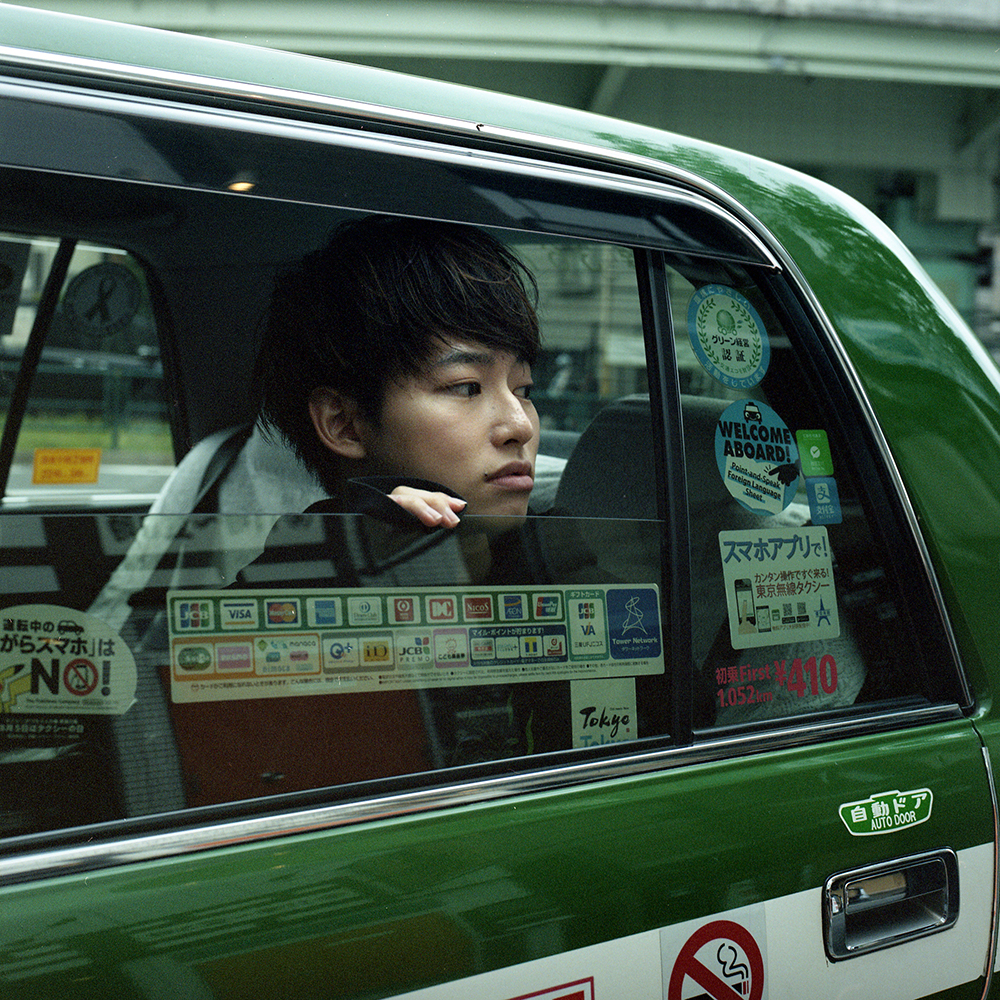
Goken, 23 Born in Shanghai, China. living in Tokyo, Japan Identifies as non-binary, genderqueer and x-gender. Uses the pronoun he/him. – A person is just who they are, even if they are born genetically male or female, that does not mean that they have to act that way, there is no need for separation between genders. I do not like all the labeling. There should not be any borders between what men should do or what women should do, neither masculinity and femininity. I felt like transgender from birth, but last year they realized that they are not transgender but non-binary instead. When I was trans, I had a lot of anxiety and emotional issues because of the decision of getting surgery. Lots of trans people either get surgery, and they are still unsatisfied and wind up committing suicide. Other people can not get the surgery for some reason and wind up committing suicide. ©Linda Bournane Engelberth
OUTSIDE THE BINARY
The following introduction to this series was written by Edea A. Wang, one of the subjects of the project, who best summarizes its intent:
The male and female gender identities are well established today. However, there are also people who feel they fall outside this binary. That is what this project focuses on; individuals who do not identify as simply male or female. The idea of more than two possible genders, is a controversial topic. A debate flares up, where one side insists that it’s binary, and another side claims there’s a spectrum. Disputes arise, and many are left misunderstood and unheard. There’s frustration, anger and pain. The wonderful thing, then, about this project, is that it shows the people the debate revolves around, in peaceful portraits. Each photograph captures individual beauty, but also a universal humanity. We see people living their truths, presenting themselves with confidence and hope. What they want is the freedom to live out themselves this way.
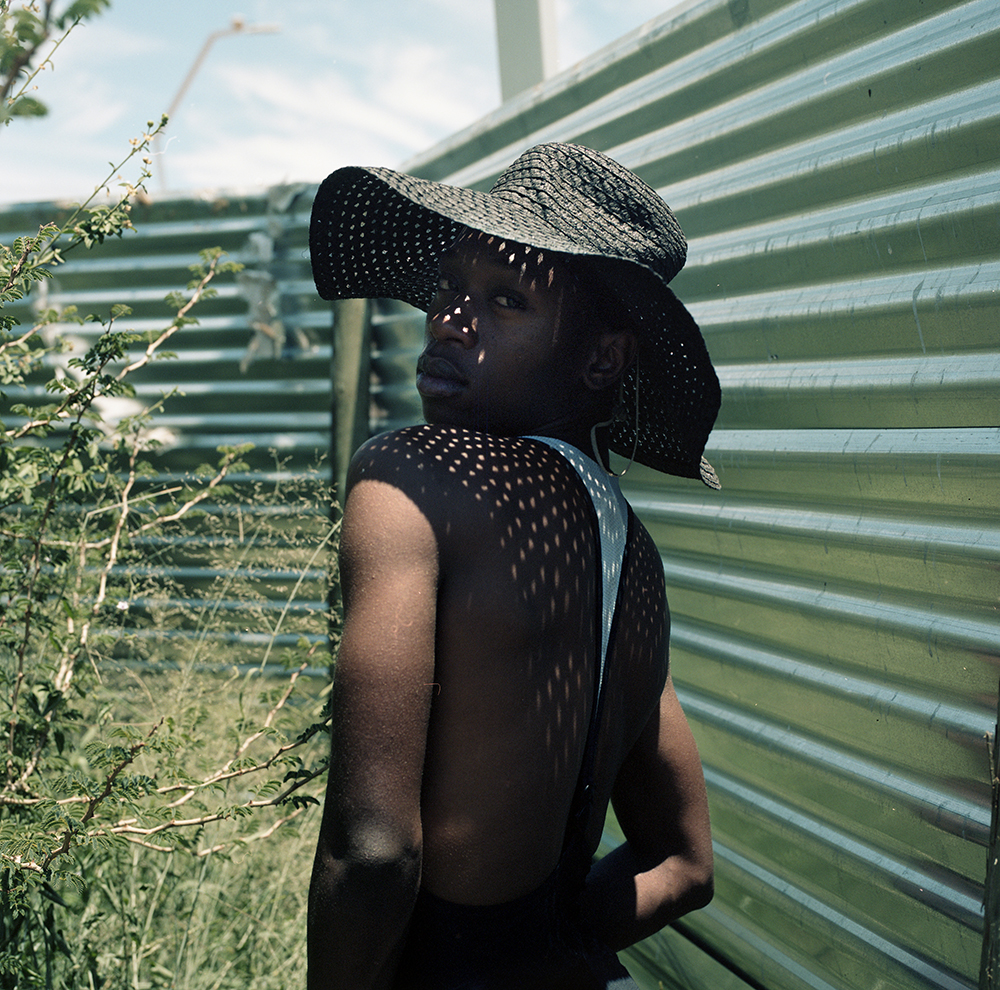
Melino, 21 Botswana Identifies as Gender Queer. – Sometimes I feel like a woman and sometimes I feel like a man. My family has accepted me the way I am, and I feel happy for who I am. In Botswana it is allowed to be queer. I started to feel like this when I was around 7 years old. Sometimes I dress as a little boy, and sometimes as a goddess, like a woman, like a queen. My advice for other people is that you should stay true to yourself, do not let anybody hold you down and take advantage of your sexuality or gender. ©Linda Bournane Engelberth
Various identities are represented here, as being non-binary can have several meanings. For one, it could mean having both male and female identities, or something in between. This could for example be referred to as androgyne. Another possible identity is genderfluid. This refers to a gender that varies over time. One can then shift between feeling more male or female, but also androgynous or neutral. Another identity is agender. This could mean not defining oneself through gender at all, for instance thinking one’s personal traits are what’s important. These are but a few of many possibilities. Some prefer the term genderqueer over non-binary. Also, many choose alternative pronouns like ‘they’ rather than ‘he’ or ‘she’.
Where transgenderism and various sexual orientations are known, the non-binary isn’t always heard of. Therefore, another purpose of this project becomes to raise awareness. It happens that non-binary people are mistaken for homosexuals or thought to be transgender when they’re not. There are, however, non-binary people who are homosexual or also identify as transgender.

Tevin, 18 Johannesburg, South Africa Identifies as gender non-conforming and a non-binary person. – For me it means full expression without any limitations, and it allows me to be whoever I want to be, whenever I want to be it. Growing up, I always felt limited when everybody identified me as a boy, because I never felt comfortable identifying as that. When I grew older, and was exposed to a much bigger world, I learned that there are more varied identities. When I discovered the queer community, it was where I felt at home, and that this is who I am, and where I belong. I am generally safe as a black queer person in South Africa. The country is slowly moving in to a more progressive phase, with more visibility, and with more exposure in the mainstream media. The country is slowly being more aware. But I have felt harassed a multiple times, and I will be as long as I use public transport. We also get harassed by taxi drivers, because they do not know what we identify as, and they find us confusing. I have been verbally and physically attacked by strangers on the road, that happens quite often. It is something I have to live with. It is legal in South Africa, but if you report something to the police, you will most likely not been take seriously, they see you as a joke. One thing I would say to the people out there is: Stay true to who you are and be open to teach and educate people. This is the only way countries will progress. In that way we will learn and grow together. Stay strong. ©Linda Bournane Engelberth
It’s widely agreed that both physiology and environmental factors shape the individuals we become. Still, some are convinced that gender is nothing but a social construct. Emotional and psychological factors may be named as determiners for one’s gender. Others think it all depends on biological sex. In other words, there are many ways to view what gender is, and how it relates to sex and identity.
Gender: a familiar word that may seem so simple. It’s easy to take its meaning for granted, yet there are vastly different ideas on what it means. Now, when a multitude of new gender terms are introduced, it becomes even more complicated and confusing to many. Therefore, it’s important to remember that people will use the words they know, with the knowledge they have. A discussion will first be fruitful, when we not only listen to each other’s words, but also enquire about the meaning behind them.
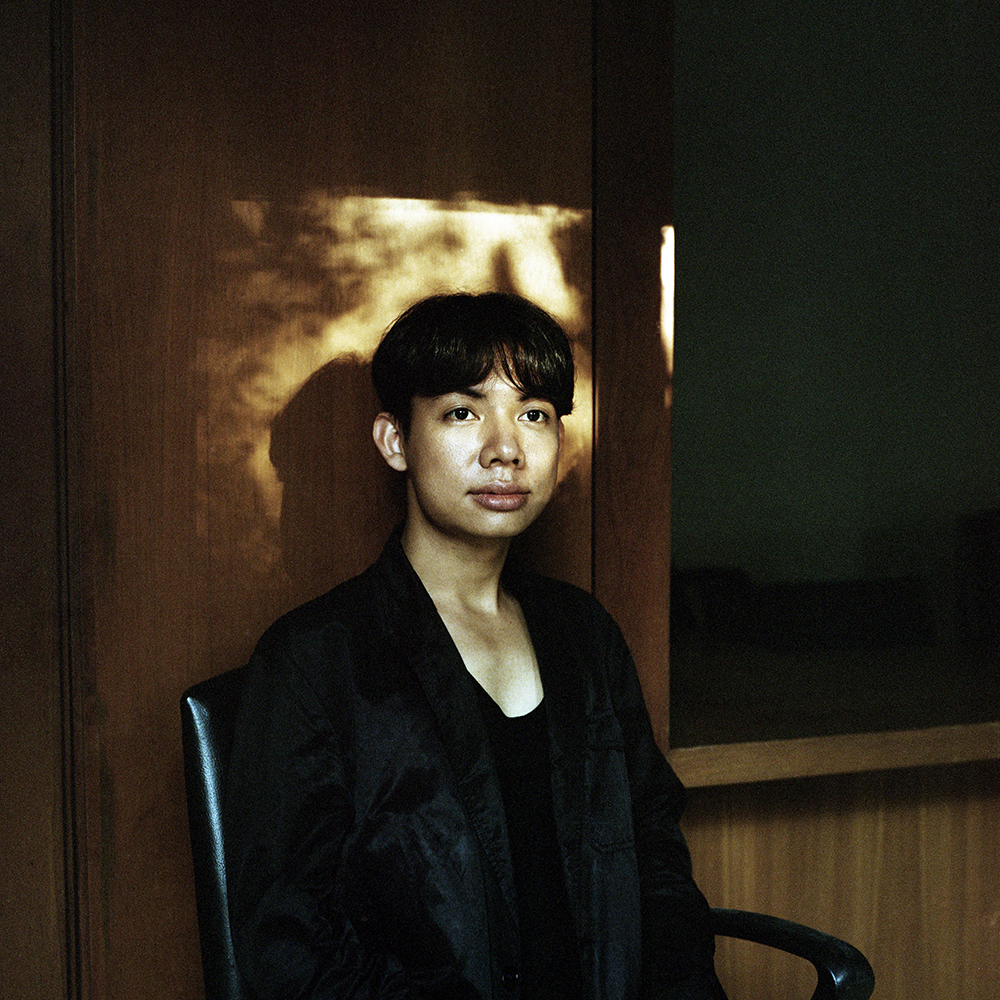
Pong Charan, 26 Bangkok, Thailand Identifies as a queer non-binary person. Uses the pronouns they/them, she/her, he/him, you can choose. – I cannot explain my identity to other people, so I just keep it for myself, because people mostly accept it when I say I am non-binary. If I knew more people like myself, I would feel more confident to start talking about it. I like to look “in between”, androgynous. We have our own non-binary group within the community in Thailand. In the group we also have other people supporting us. Most of the non-binary people are activists in this group. It is very hard and tough for the movement, even the rest of the lgbtq+ community do not really understand. If people understood what non-binary implies, they would not discriminate us. We have our own identity. I started to feel like this a long time ago, but even more when I grew up. But I had to live the way people could accept, especially in school. It was very hard as a teenager. I feel like it is very hard to come out and show our identity because of the discrimination, but if we stand together it will all be okay. ©Linda Bournane Engelberth
As of now, many questions and conflicts are left unresolved; the gender debate is still ongoing. Meanwhile, we are all here, trying to live our lives in the best way that we can. Regardless of viewpoint, let’s open our minds. Let’s open our ears and our eyes. Rather than argue, let us converse, and a peaceful coexistence may start with this.
I am proud to be part of this project. It is my wish that this glimpse into the non-binary, will spark some new thoughts or ideas within you, the beholder. I hope that you too sense the intimacy and feel the peace in these pictures. If you look close enough, maybe you even recognize a piece of yourself.

Omary, 30 Tanzania Identifies as a gender nonconforming person. Uses he as pronoun. – I feel like a male, but sometimes also like a woman. I have been feeling like this since I was young. I was more comfortable playing with girls at school, and I had many girls as friends, but no boys. In Tanzania it is very difficult to show what I feel. In my sexual orientation I am bisexual, but this is very difficult here. I dress as a man because of the expectations, and also because I used to be married. To be a Muslim and gender nonconforming is very hard, because if people knew, it would be a big problem for me and also for my family, because it is not allowed. If the Muslim community knew that I feel like this, they could kill me. It is not only about gender; if you have a wife and you are doing sex from behind, it is also a problem, so the rules are very strict for Muslims. In my marriage, I would first hide it, but then she found out from other people. At the end of the day she realized that it was true. She loved me anyway. My wife broke with me in the end, because she did not respect the family. And because I also had a boyfriend at the same time, she was reacting to that. I would like to say to the world that to be gender nonconforming, or to be gay, is not a bad thing. Sometimes people are born like that. It is the same thing as if a person is born as an albino. So it is not good to see them as bad people, they also need to have rights. ©Linda Bournane Engelberth
What are the principal challenges you encounter as a documentary photographer in terms of selecting a specific issue or project to pursue? What unique challenges arose in shooting Outside the Binary?
Each project that I have undertaken poses unique challenges since all projects are challenging. With Outside the Binary I was engaging with a very specific community. As a cis-woman, I am an outsider entering a different world and their voices are more important than mine. Acknowledging that reality allowed me greater access to the community that I was addressing. It gets down to getting as close as you can to the people you are dealing with and determining how I might give them a voice. Some non-binary individuals do not want a cis-person telling their stories and I recognize that reality. That is why my project statement was best written by one of my subjects, Edea A. Wang.
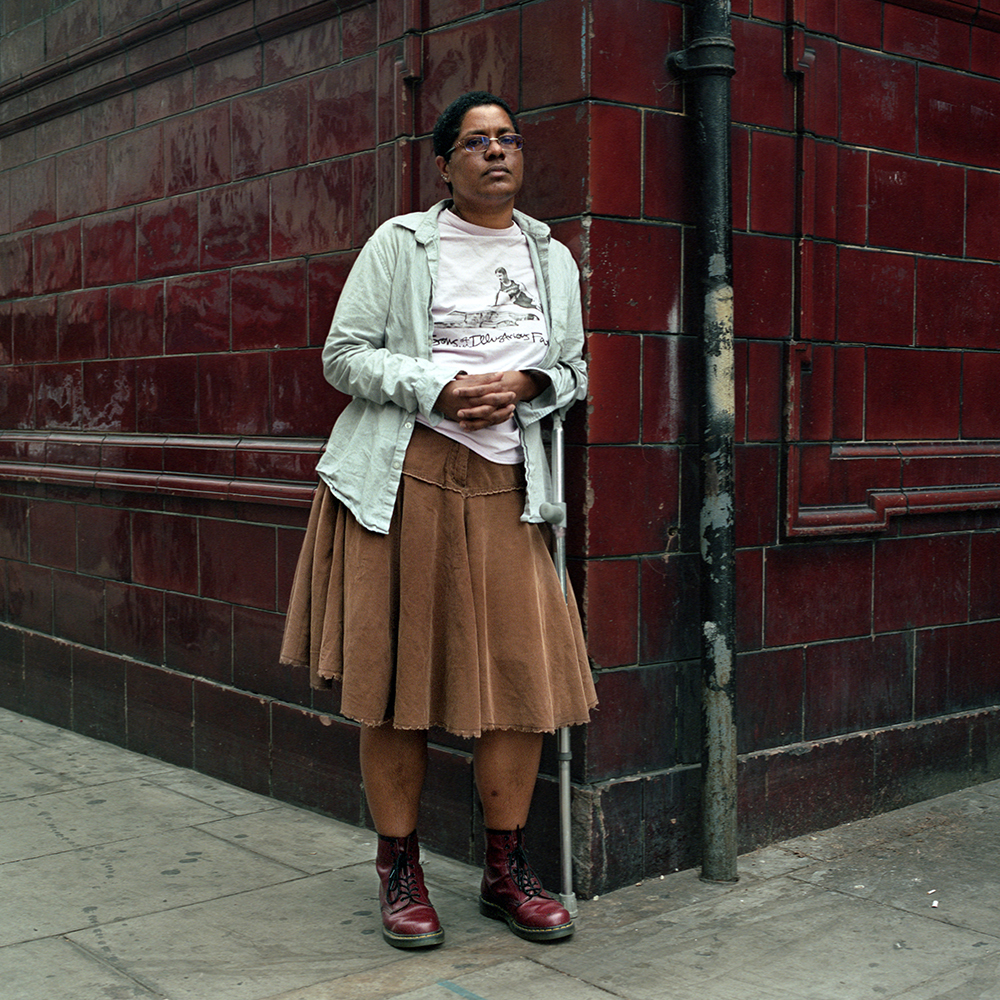
Angie, 43 Born in Trinidad & Tobago, lives in London, UK Identifies as a non-binary person. Angie uses the pronouns they/them. – I do define myself as a non-binary person. I was originally assigned female at birth, and that never really felt right, but I also did not identify as male. It kind of took me a long time to work out what I was. And then, at some point, I came across the concept of non-binary, and that just felt right. To me, it is about being able to accept myself in any way, and not feel bad, or that I am doing it wrong or that I am not being enough of a woman or enough of a man. I can kind of create my gender without feeling that I am not authentic. ©Linda Bournane Engelberth
Given the possible socio-political stigmas and legal jeopardy conferred upon the individuals you photographed, how did you get them to open up and share their stories with you? Have there been any repercussions for any of them as result of the publication of your series?
This was another challenge of the project. I had to be very careful in countries where it illegal to diverge from the norm. I had two assistants who helped me with the research by identifying queer organizations in each country I visited. Instagram and the non-binary community, itself, were major sources that helped me in gaining access to individuals. One person would refer me to another, and it became a networking effort of sorts. The community will not open up to without a personal introduction from another person that they trust. I also had to explain carefully what they would be part of and the limits they were willing to accept…some would only agree to be depicted in exhibitions or the book that I am planning but NOT on social media. I always respected their choices as it could be dangerous for some of them not to do so.
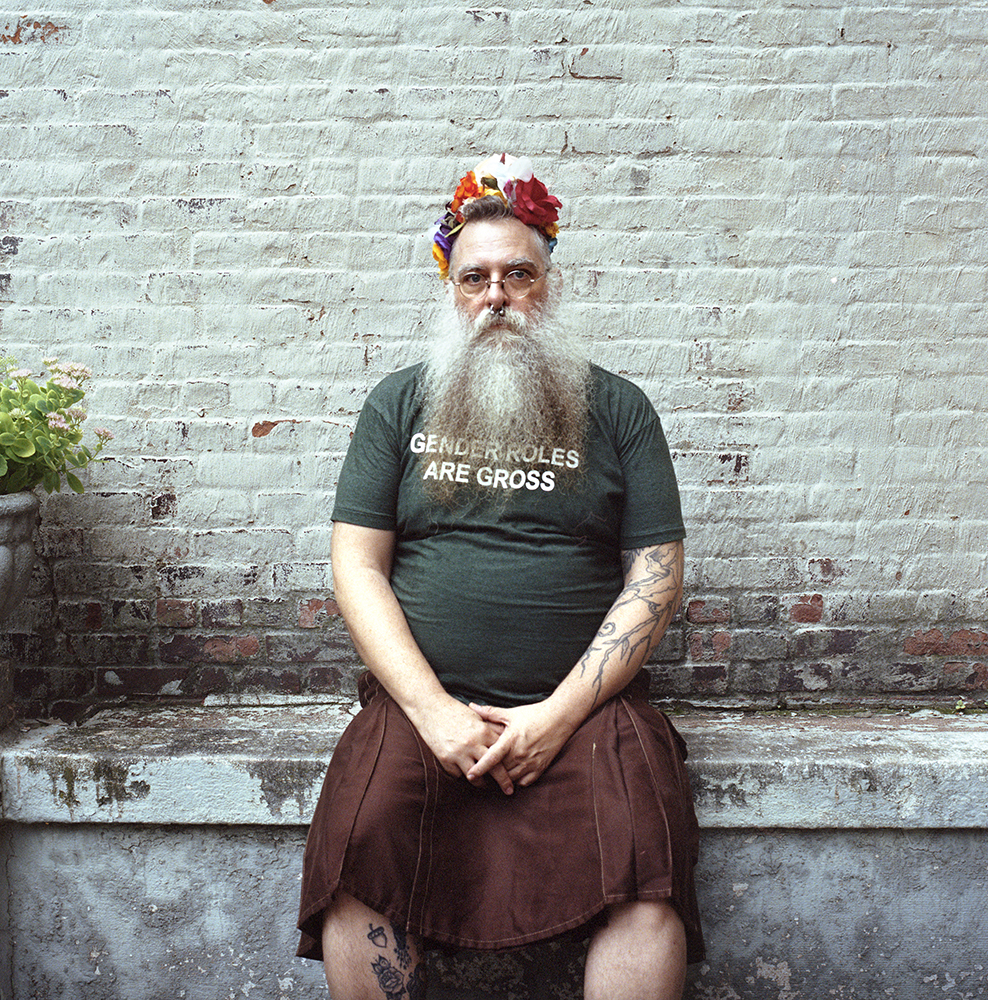
Nayland, 58, New York, US Identifies as a gender fluid and non-binary. Uses the pronoun they/them. – For me it means that I experience my physicality and gender markers on a scale that fluctuates, and I think that my gender expression takes elements from both masculine and feminine style. Throughout my life I experienced gender and gender identification more as an expression, than something that felt innate, and I experienced it as an expression in the way that I felt that I was failing on what was expected of masculinity. So, in the early 90s when there started to be more of a discussion of theoretical expressions of identity, we started to have more of a theoretical framework that reflected me more accurately. My own internalized feelings of it, I think that one of the things that has been really powerful and exciting for me in the past ten years is the rise in and work of trans theorists and a much more thorough discussion on what gender can and does mean. I think that I really try to do throughout my life is to let people know that they do not understand the full truth of me through my appearance, and my hope with that is to give other people the courage to make the case for the reality of their own feelings. ©Linda Bournane Engelberth
I also never use their full names – in some cases, only a nickname and in some countries, I do not identify the city or community where they live. I offered all of them anonymity but since many of them are activists, they preferred to be identified to tell their individual stories.
The New York Times article was published prior to my going to countries in Africa where the legal issues arise, but nevertheless, one individual felt terribly harassed by the public comments that were written in response to the article. Some of the comments were horrible, but the participants put up with it because they felt it was more important to share their experiences. It is my desire that the project enlightens the audience and allows people to realize that this is nothing new despite the vocabulary currently used to describe it…it is something that transcends boundaries of all kinds.

Ynda Jas, 26 London, UK Identify as non-binary and genderqueer. Uses the pronouns they/them. – I define non-binary people as those who identify as something other than female or male, at least partially and at least some of the time. Personally I do not identify as female or male at all. I was assigned male at birth but I tend to lean towards a more femme presentation these days. But it is not all about presentation: it is also a sense of what female and male mean within your own culture. I am non-binary because I do not really align with what those identities and categories mean for me within my culture. I think non-binary could potentially be a way of labeling the system of gender, so gender is inherently non-binary. Within the system of gender there are categories such as female, male, genderqueer, maverique and so on, as well as agender which is essentially a lack of alignment to any of them. So non-binary can be a way of describing the fact that the system is comprised of more than just two categories, but as it currently stands it is also a discrete identity on its own. I think the non-binary community is very diverse. Anyone could potentially identify as non-binary but there are arguably some trends within various subsets of the non-binary community. Some non-binary people will present in similar ways, but not all. ©Linda Bournane Engelberth
Your subjects come from a wide range of countries…was this intentional on your part and how did you manage it on a practical level?
I had no funding for this project, but I travel a lot for my work with the VII Agency. I get different assignments abroad or I get to different countries for presentations and/or exhibitions. Even on vacation I sought out people to interview for this project. I am privileged that I grew up in Norway where we have greater access to funding for specific projects. I am also lucky to be an international photographer which allows me to travel widely. When I have an assignment, I add a few extra days on to the travel time at my expense to deal with my personal project efforts.
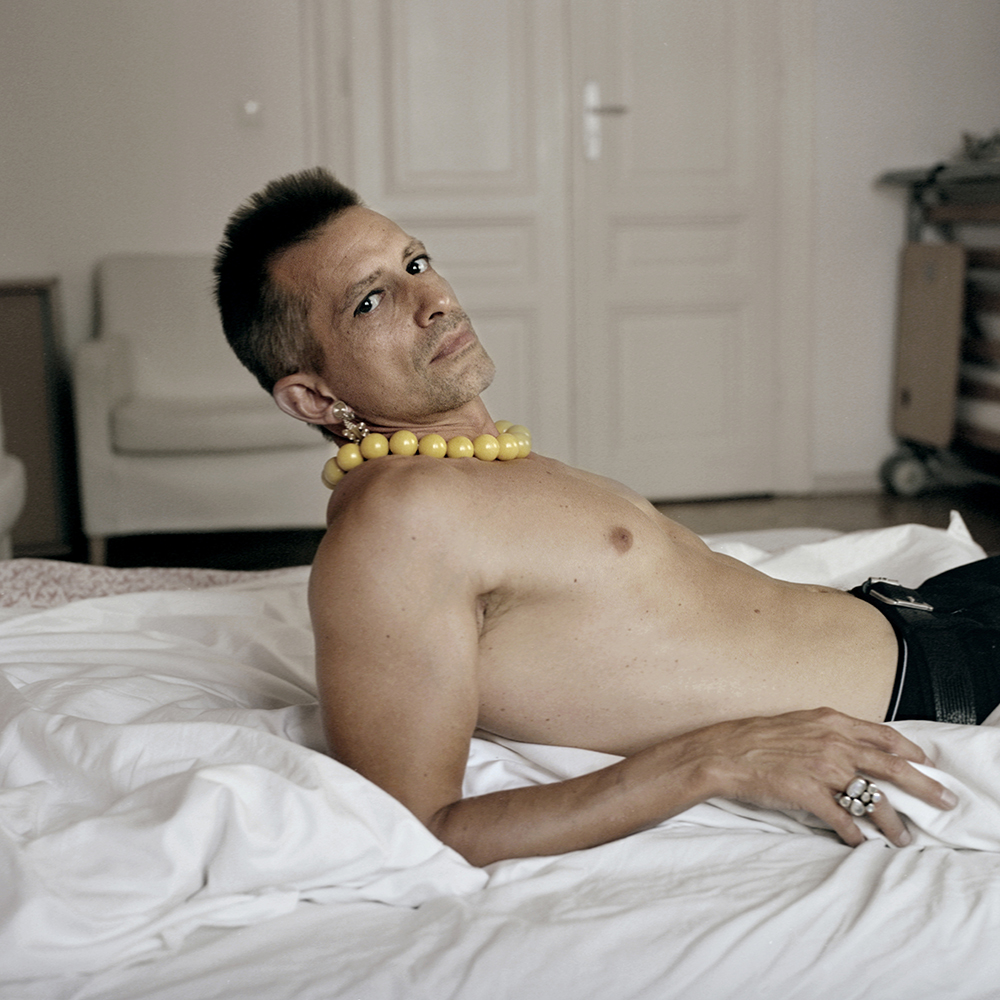
Stefano, 46 Born in Vienna, Austria, lives in Cape Town, South Africa Identifies in many different ways; non-binary is one of them. Uses the pronouns he/him. – I believe that all men have some sort of feminine energy, but most men feel scared or uncomfortable of getting in touch with their feminine side. They might think that they are weak or gay if they embrace their feminine side. I also believe that women have some masculine energy; some have more, and some have less. It is an individual choice if, and how, one gets in touch with it, or just says “no, I do not have it”. I believe this is different for everybody. In my case, I feel I am very masculine, but at the same time, I also feel that I have a lot of feminine energy inside of me. Sometimes I want to play and experiment with that. I always wanted to try to put on makeup. It is the first time I did it for this picture. I have been too uncomfortable to use it before, but I want to do it again. ©Linda Bournane Engelberth
What was your process in photographing each subject? Did you have a specific concept in mind or was each situation spontaneous?
I look for the similarities among people as we all have so much more in common than our differences. My process was to make the best portrait of each individual. I have been inspired by the portraits of Lucien Freud as his paintings probe so deeply into the psychology of his subjects. I am also inspired by old Renaissance paintings portraying kings & queens with strong postures and with shoulders thrown back. I must confess that the style of the project has evolved over the two years that I have been shooting,
My ideal is to have several hours with a subject. Ideally, I would spend 1-2 hours with each person. First, we would go for a walk until something starts to happen…and I hate when I do not have the time to relax and interact with the person I am photographing.
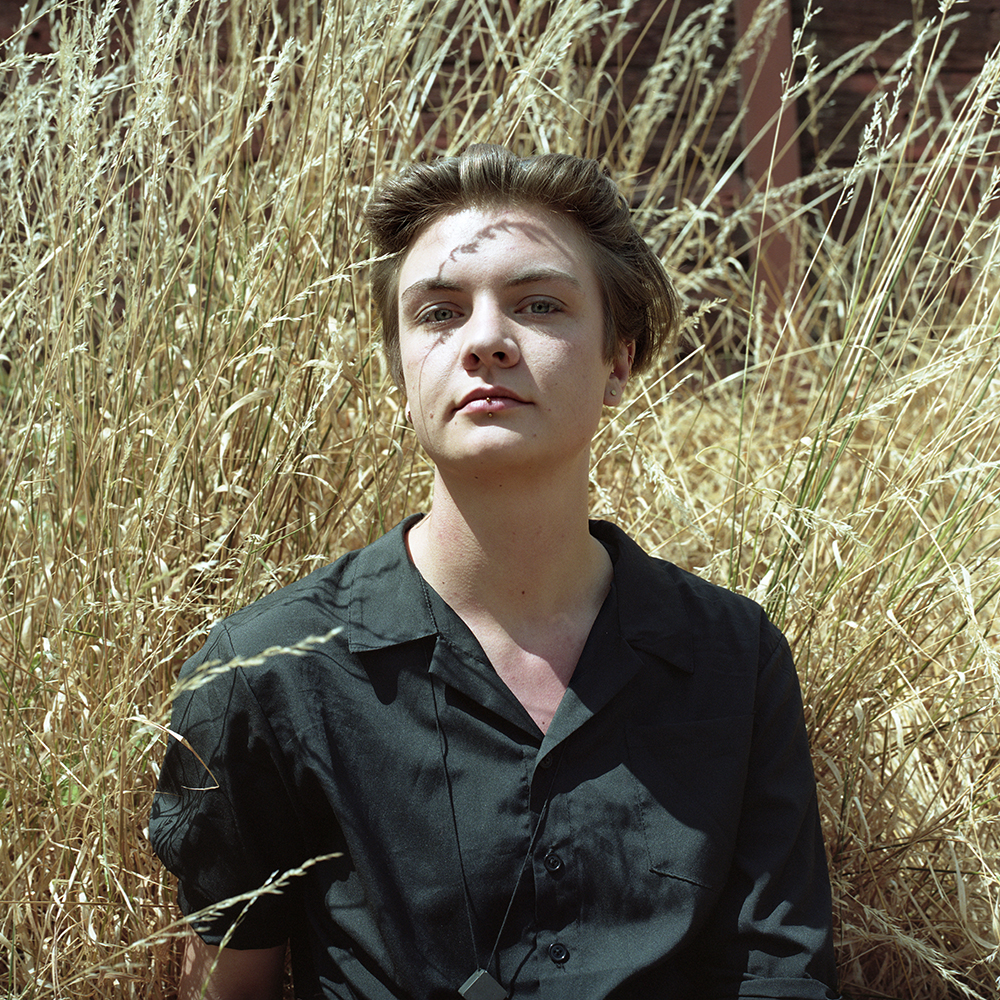
Luca, 25 London, UK Identifies as genderqueer. – I rather use genderqueer than non-binary. It is a political term not only describing my individual positioning but my rejection of the binarism as a whole. I think gender is something fluid and the world is non-binary in itself. I always struggled with narrow expectations of gender. The gender binarism that surrounded me felt really oppressive. And I do not want to conform to something that feels oppressive. To me, it is very much about complicating gender to make space in between what most people see as male and female. Embracing genderqueer lets me explore different ways of living with gender, queering gender and breaking free from gender. I want to confuse people with my gender expression, play with their assumptions. This is how I feel that there is some space in between all these rigid ideas and images of how women and men look, move and sound like. ©Linda Bournane Engelberth
What advice would you give young, aspiring photographers about career prospects in photography for now & the future?
There are so many talented photographers out there that one must have a clear idea about what you want to do with your photography be it political, social or artistic. Be stubborn and follow your own path to reach your goals. Be persistent and never give up because you will hear a lot of “nos” along the way. Persevere and good will come of it if you keep your sights on the positive.
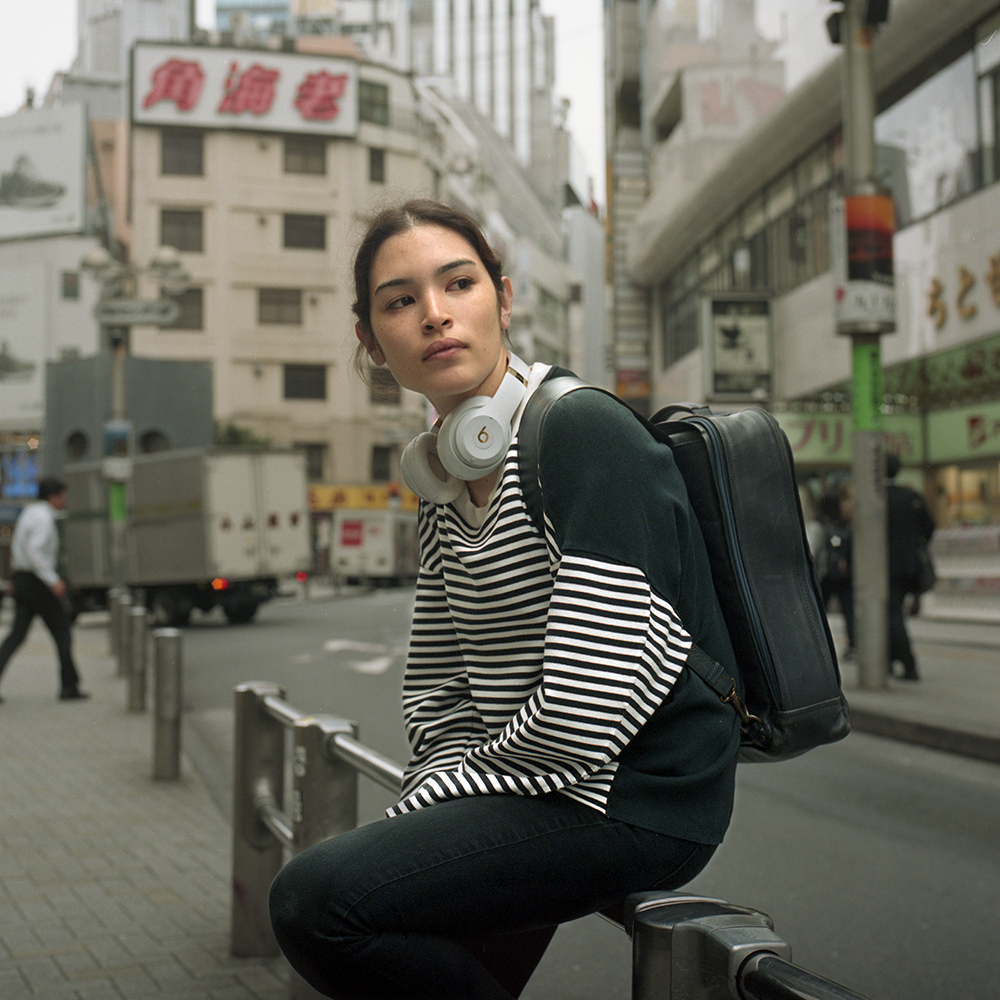
Emma, 27 Born in Osaka lives in Tokyo, Japan Identifies as gender fluid. Uses pronouns she/her. – I have a more masculine day, a more feminine day, and a somewhere in between day. These moods reflect on my everyday fashion and behavior. Gender emerges from within, like emotions. As a child, I was aware of my gender fluidity. I felt comfortable when my friends acknowledged my position between girl groups and boy groups. When my body grew into a female, I cried because of the uncomfortableness; but transitioning did not feel right either. Back then, I was confused being Japanese, British, heterosexual, homosexual, feminine and masculine all at the same time; and I always felt like I was not enough of anything. As my personality grew, I started to realize that I just need to be Emma. That is when I began to fully embrace the pleasure of feeling my identities. ©Linda Bournane Engelberth
What is the next photographic adventure on your horizon?
I always have four or five projects going on at once. The pandemic has interfered with finishing Outside the Binary as I am missing representation from some important countries such as Russia and India, to name a few. My plan is to do a book on the project once I am able to travel again to complete it. I am also photographing the architecture of the working-class neighborhood where I grew up in Oslo. So, I am keeping quite busy with more on the horizon when a vaccine appears.
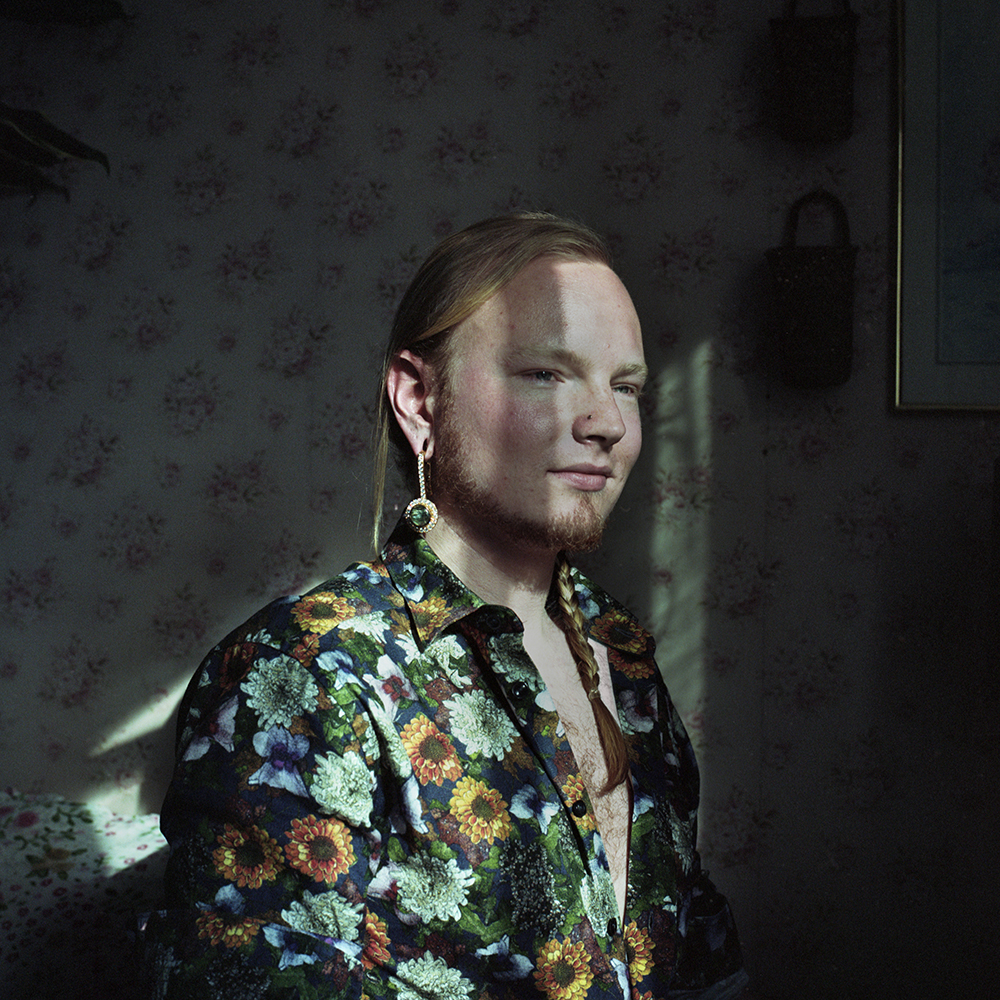
Edea, 28 Hamar, Norway – At this time, I can not see us all agreeing on what gender actually is. As such, I can not define myself in terms of gender either, and I do not feel the need to. There is so much more exciting and interesting to a person than their gender or sexual orientation. My sexual orientation means I am attracted to a certain group of people, and that is all; it does not say anything about who I am. Who I am is about the qualities I have, my values and personality. So, to me, what gender you assign me is not so important. At 16 I concluded that I was actually a woman. And so, I lived as a woman for six years. Even before then I was mostly feminine all my life. However, at 22 I did not want to live that way anymore. I tried putting on a more masculine expression, and that was entirely new to me. I viewed it as entering a third phase, not going back in any way. ©Linda Bournane Engelberth
Posts on Lenscratch may not be reproduced without the permission of the Lenscratch staff and the photographer.
Recommended
-
Aaron Rothman: The SierraDecember 18th, 2025
-
Gadisse Lee: Self-PortraitsDecember 16th, 2025
-
Scott Offen: GraceDecember 12th, 2025
-
Izabella Demavlys: Without A Face | Richards Family PrizeDecember 11th, 2025
-
2025 What I’m Thankful For Exhibition: Part 2November 27th, 2025














































